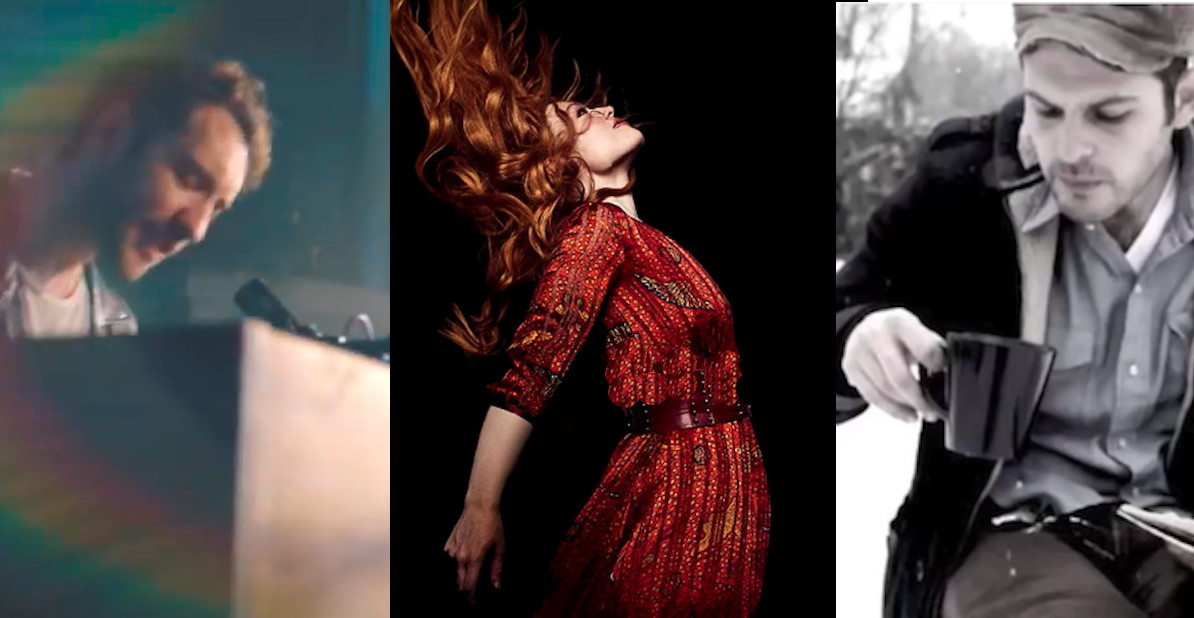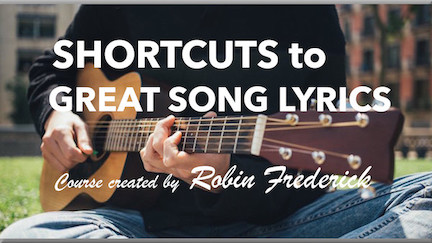Film and TV songs are hot. Commercials, TV dramas, Reality TV, and competition shows are using more songs than ever. Original programming from producers like Netflix, Hulu, and HBO have erased the notion of “seasons.” It’s a year-round gig and music libraries want to fill the need.
Together, let’s take a look at three singer-songwriters who get a lot of film and TV placements. We’ll dive deep into a song from each to see why these songs are so successful and how you can use many those ideas in songs of your own.
“Got It In You (Acoustic)” – BANNERS
Songwriters: Michael Nelson (aka BANNERS), Sarah Berrios
Listen to the song on YouTube.
Read the lyrics.
“Blackout” – Freya Ridings
Songwriters: Ollie Green, Freya Ridings
“Second Chances” – Gregory Alan Isakov
Songwriters: Gregory Alan Isakov, Ilan Gary Isakov
Listen to the song on YouTube.
Read the lyrics.
AIM FOR AN EMOTIONAL SITUATION
For a song to be effective as underscore accompanying a scene (as opposed to source music playing within a scene), it needs to express an emotion, mood, or atmosphere in a way that will enhance the impact of the scene for the viewer.
These songwriters couldn’t know what specific scene (if any) their song would be used in. But because they wrote about emotions and situations that are universal, their songs could be used in many scenes. Everyone has had experiences and felt emotions like these.
Many movie and TV scenes are also built on common, universal experiences we all share. Even if it happens to a vampire or zombie, it’s still a feeling we can relate to. Songs like these will work for any scene built on a similar emotional situation.
Here are the emotions and situation I think each song is aiming for. See if you agree.
Got It In You (Acoustic)
SITUATION: I see your strength. Believe in yourself.
EMOTION: Compassion, supportiveness
Blackout
SITUATION: I can’t let go of you.
EMOTION: Desire, obsession.
Second Chances
SITUATION: In the dark times, there’s a ray of light.
EMOTION: Hope amidst despair
– Try It Now –
Watching TV and movies can help you identify common emotional situations you can use in your own songs. Before you start writing your next Film & TV song, spend some time looking for a situation or feeling you want to write about, one that others can relate to.
Learn more about finding and using song themes.
SONG STRUCTURE
REFRAIN LINES: Film & TV songs have more flexibility in their structure than radio-style hits. For radio, a big chorus section and lots of momentum are required to keep the listener’s attention. Songs for film and TV can stretch out, leave gaps between lyric lines, and add instrumental sections. They can also shorten the big radio-style chorus to just one or two lines. These short sections, or refrains, sum up the emotion of the song and act as payoff lines, just like the final line in a larger chorus.
In Second Chances, the refrain line is “If it weren’t for second chances, we’d all be alone.” That’s the emotional heart of the song. It’s repeated at the end of every verse and takes the place of a big chorus.
WHEN YOU HAVE A CHORUS: Of course, there are plenty of Film & TV songs that have choruses. Got It In You (Acoustic) has a clear chorus section and a common song structure: Verse/Pre-chorus/Chorus. The Chorus begins with “When the lights go out” and ends with “You got it in you.” Even though this is a larger chorus than some Film & TV songs, it still doesn’t have the kind of attention-grabbing hooks that work for radio. They would be too distracting to be used with picture.
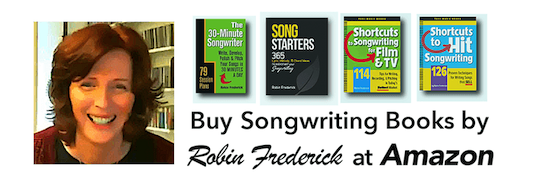
LYRICS
Film & TV songs avoid telling a story. That’s the scriptwriter’s job. Instead, they focus on emotion—what the singer is feeling or an overall mood or atmosphere.
IMAGERY: To convey emotion or atmosphere, we use imagery. We express it as a physical sensation or compare it to an object, animal, season, or action. We can also use words that have emotional associations, ones that support the mood of the song.
Second Chances is a brilliant example of this type of imagery-based writing. In line after line, Isakov expresses the weariness, the disconnection, and despair of the singer in vivid terms.
I’m mumbling in the kitchen for the sun to pay up
Lonely is a ring on a cold coffee cup
I’m some sick hound digging for bones
If it weren’t for second chances, we’d all be alone
Words like “mumbling,” “lonely,” “cold,” “pay up,” “sick” and “bones” all have dark, downbeat associations for listeners, causing them to feel what the singer is feeling. It’s not until the refrain line that we’re given a glimmer hope in the phrase “second chances.” We all know what a second chance feels like when you think you’ve lost everything.
– Try It Now –
The lyric of Blackout is conversational, not as image driven as the other two songs. The singer states facts: “If you would’ve just let me in…”. But the word blackout dominates the song and stands in for the singer’s feelings. What does blackout mean to you as a listener? How does it feel to you?
Go through some of your own songs to see if you can add words and phrases with emotional associations that evoke a response in the listener.
MELODY
A song melody is a great place to express the emotion that film and TV scenes want. But you need to be sure that your melody is expressing the right emotion, the one that supports your lyric.
HIGHLIGHT THE MOST IMPORTANT WORDS: Take a listen to the chorus of Got It In You (Acoustic) to hear a melody that rises to a hopeful peak before relaxing into a simple statement of fact. The highest notes in the chorus are on the words “shining through”—the most upbeat and important image in the song.
This is followed by the payoff (final) line of the chorus in which the melody resolves to the home note and eventually the home chord, giving a sense of finality and weight to the phrase “You got it in you,” which he repeats in the pre-chorus as well. This is the statement he wants you to remember.
USE THE MELODY OF SPEECH: The melodies of all of these songs are close to the melody of everyday speech. This is a style that works well for Film & TV songs. It adds credibility to the song by increasing our sense that the singer is expressing his or her real thoughts and feelings.
When we talk, the more emotion we feel, the more melodic our speech becomes. Our voices rise. We use more volume changes, more repetition, and more rhythmical emphasis.
You can hear a melody with a lot of emotion in the song Blackout. It has a big note range, emphasizing the idea that the singer is expressing big emotion. With its high, breathy opening verse melody, much lower second verse, and then gradual build up of volume and repetition, this melody is tracking the singer’s feelings as we follow along.
– Try It Now –
Second Chances has a restrained melody, staying within a narrow, conversational note range. Why do you think it does that? Why does a restrained verse/refrain melody work for this song?
Listen to all three songs. When did the melody strike you as conversational? When did the emotional quality of the melody increase? Did these match the peak emotional moments of the song?
CHORDS
All three of these film & TV songs use simple chords and basic chord progressions. This is true of many contemporary Film and TV songs. Unless you’re aiming for a specific style like American Standards, or the songs of Brian Wilson and The Beach Boys, or the R&B ballads of the 1970’s where chord progressions ruled, you’re probably safe to stick with four-chord progressions within a single key in your own songs.
See the chords & lyrics here: Got It In You (Acoustic)
See the chords & lyrics here: Blackout
See the chords & lyrics here: Second Chances
-Try It Now –
Check out one of these songs and learn to play and/or sing it. If you don’t play an instrument, just sing along with the track to get the feel of the melody and lyrics.
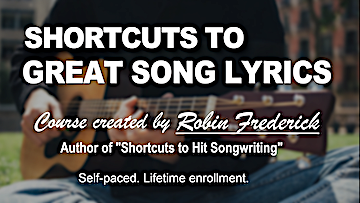
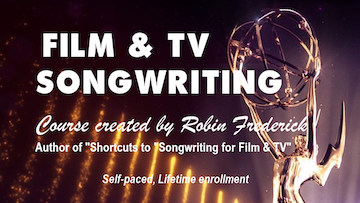
PRODUCTION
Each of these productions is built around an acoustic instrument—piano or guitar. We assume that the instrument is played by the singer/writer. This gives each song an immediacy and an intimate feel as well as a lot of credibility. We feel the singer just experienced this and is telling us about it. It also gives the song a better chance of being used in a scene because a solo singer can credibly express the internal feelings of a character.
Keep in mind that songs can also be used to create an atmosphere or mood, not just the feelings of a single character. In those productions, you’re likely to hear more emphasis placed on layers of electric and acoustic guitars, keyboards, and orchestral sounds. There won’t necessarily be a single central songwriting instrument.
– Try It Now –
When mixing your song, be sure to get a stripped-down, acoustic version. Guitar and vocal or piano and vocal is enough if the performance is solid. Got It In You (Acoustic) got more placements (and better ones) than the full version. Of course, you’ll get an instrumental-only version, right? Always have one ready to give to a music library or music supervisor when they ask for it.
VOCAL PERFORMANCE
If you’re singing your own songs (or directing a vocalist) look for opportunities to use voice to express emotion.
In the verses of Got It In You (Acoustic), notice how BANNERS uses a rhythmical delivery to emphasize his words. It adds energy and a sense that the singer really means what he’s saying. You can almost see him pointing his finger at the other person as he sings.
In fact, physical expressions that normally accompany speech, such as finger pointing, shrugging, or hand gestures, can help a vocal performance sound more real. Go ahead and gesture as you sing. Speak the lines with plenty of emotion before you sing them. It can make a world of difference in the believability of your performance. (Just be sure you stay on mic.)
– Try It Now –
Listen to a song you’ve recorded previously. How well does the vocal express the emotion or character you wanted to get across? Do you think you could get closer using some of the information you’ve read here? Or do you think you could write a song that would take better advantage of vocal strengths you have?
My Film & TV Songwriting playlist on Spotify includes over 6 hours of songs that have been featured in TV dramas and commercials. I try to select songs that can be created in a home studio so you can use some of these ideas in your writing and production.
To be notified of new additions to the list, follow my Film & TV Songwriting page on Facebook.
READ MORE HIT SONG GUIDES ON THIS SITE and learn from the hits!
